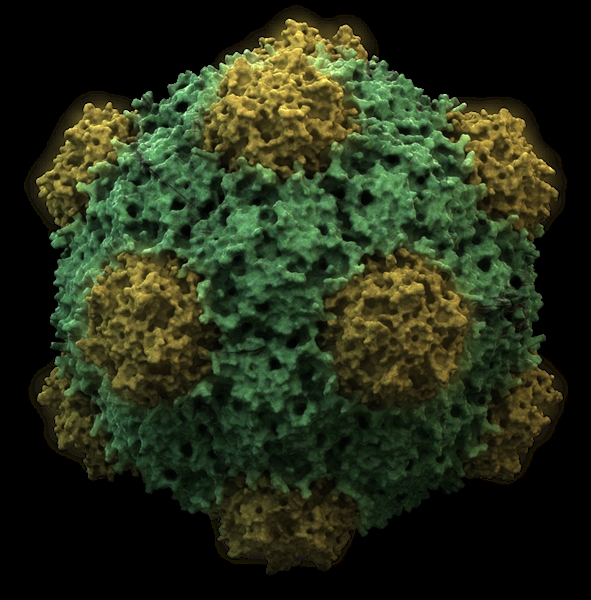30 June 2017. A bioengineering lab is receiving awards from National Institutes of Health to apply nanotechnology to treatments for breast cancer and diagnostics for deep vein blood clots. Both research programs are led by biomaterials professor Nicole Steinmetz at Case Western Reserve University medical school in Cleveland, Ohio.
The Steinmetz lab studies engineering at the molecular level to translate nanoscale molecular interactions into clinical applications, such as drug delivery and diagnostics. In their work, Steinmetz and colleagues identified potential cancer therapies in nanoscale viral particles shown to induce an immune response that overcomes solid tumor suppression of the immune system and combats the spread of cancer in the body.
One of the grants, from National Cancer Institute and valued at $2.2 million over its 5-year lifetime, supports research into a potential treatment for triple negative breast cancer. This type of breast cancer lacks any of the three main targets for breast cancer treatments: estrogen receptor, progesterone receptor, and human epidermal growth factor receptor 2. As a result, women with this type of breast cancer have few treatment options.
In this project, the team will investigate nanoscale particles from cowpea mosaic viruses found in plants as a possible treatment for triple negative breast cancer. In an earlier study, this virus generated immune responses that in lab tests suppressed metastases, or spread, of lung, ovarian, colon, and beast cancers. The new study will look into adapting the virus particles into a mechanism to carry other therapies into tumors.
“These plant virus-like particles,” says Steinmetz in a university statement, “have cancer-fighting qualities on their own, but they can also be used as vehicles to encapsulate therapeutics, such as chemo- and immune drugs, to synergize and potentiate the cancer immunotherapy. With the new grant, we will test whether combining the particles with breast cancer medications can combat breast cancer in mice.”
A separate grant from National Heart, Lung, and Blood Institute at NIH, valued at $2.6 million over 5 years, supports a study of plant viruses engineered to diagnose and treat deep vein thrombosis. This condition occurs when blood clots form deep in tissue, often in the legs, with symptoms occasionally such as pain or swelling. Deep vein thrombosis is considered a dangerous disorder because of the risk the clot may break off and travel to other parts of the body, such as the lungs, blocking blood flow with serious consequences.
The virus particles in this case are from the tobacco mosaic virus, a microbe studied previously in the lab as possible vehicles for cancer treatments and diagnostics for Ebola. In this study, a team will look into adapting tobacco mosaic virus particles as imaging agents for MRI scans to more quickly identify deep vein blood clots. The researchers will also investigate if tobacco mosaic virus particles can also disrupt the blood clots or deliver drugs to the site.
“By integrating imaging and therapeutic capabilities,” notes Steinmetz, “our approach will help diagnose patients, treat the disease, and monitor disease progression over time.”
More from Science & Enterprise:
- Organ Chips to be Studied on Space Station
- Company, NC State Partner on Tissue Oxygen Patch
- Knowledge Bank Tapped for Precision Cancer Treatments
- Grant Funds MRI for Mental Illness Understanding
- Laser-Immunotherapy Now in Cancer Clinical Trial
* * *


 RSS - Posts
RSS - Posts
You must be logged in to post a comment.